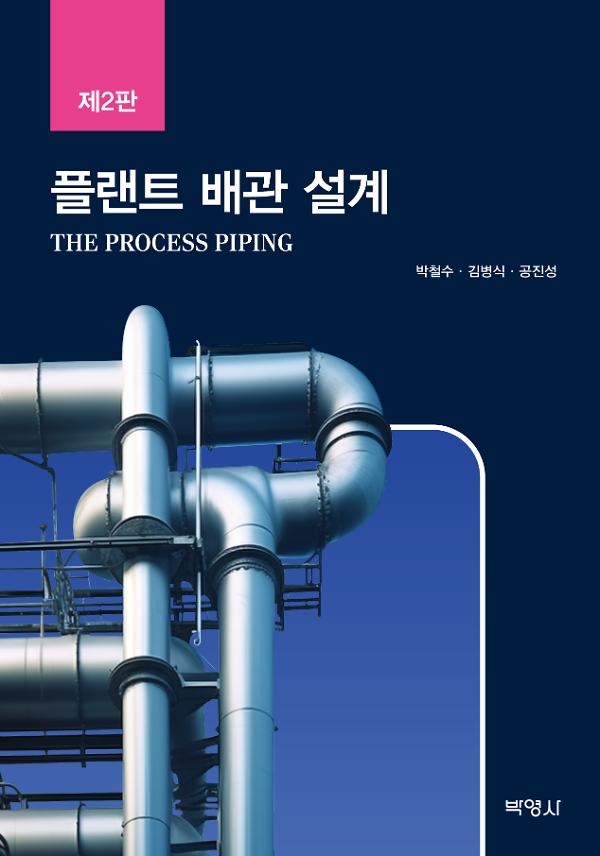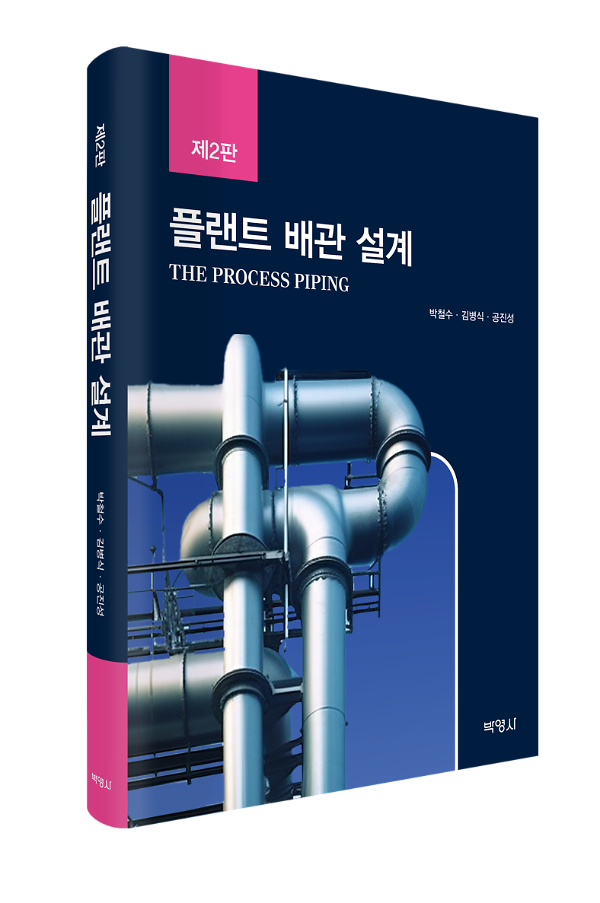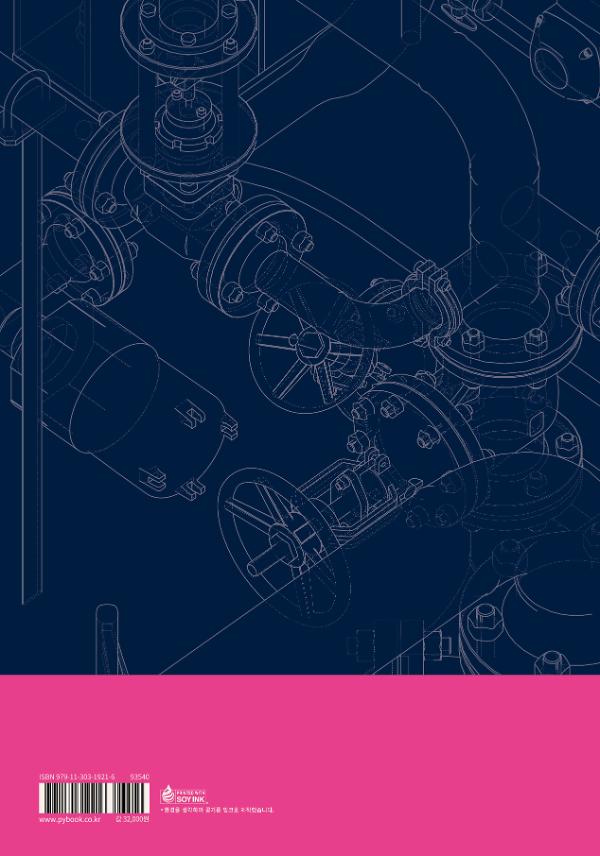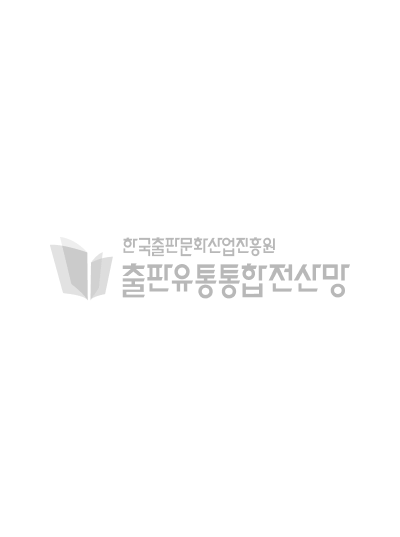∎머리말 / iii
01 Introduction of Engineering 1
1.1 General 3
1.2 EPC Business 소개 3
1.2.1 Feasibility Study 단계 3
1.2.2 Execution 단계 : EPC(엔지니어링, 조달, 건설) 4
1.2.3 O & M 단계 8
1.3 EPC Project Execution 8
1.3.1 Project Life Cycle 8
1.3.2 EPC Project Execution Organization 9
1.4 Introduction of Piping Engineering 11
1.4.1 EPC Typical Piping Engineering Organization(Support Engineer Group by Project Size) 11
1.4.2 EPC Piping Work 상호 관계 12
1.5 엔지니어링 기술의 전망 13
1.5.1 엔지니어링 산업의 동향 / Engineering Industry Trends 13
1.5.2 엔지니어링 산업 관련 중점사항 / Engineering Industry Key words 18
1.5.3 엔지니어링 산업에 대한 결론적 의견 28
02 Code & Standard에 대한 이해와 역사 29
2.1 General 31
2.2 Code & Standard 사용 32
2.2.1 코드(Code) 32
2.2.2 표준공업규격 및 단위계(Standard & Unit System) 32
2.2.3 Code & Standards가 필요한 이유 33
2.2.4 Project에 적용하는 Engineering Rule System 정의 33
2.3 ASME Code 발전과 현재 33
2.3.1 ASME(American Society for Mechanical Engineers) Code Book 구성 34
2.3.2 Understanding of Pressure Piping B31 구성 35
2.4 Future Direction of Code 활용 37
2.4.1 정성적 평가(Plant Layout Evaluation by Qualitative Evaluation) 38
2.4.2 정량적 평가(Plant Layout Evaluation by Quantitative Evaluation) 38
2.4.3 정량적 해석 ALARP(As Low As Reasonably Practice) 이해 39
∙ Example 사례 연구 : 정량적 평가(Plant Layout Evaluation by Quantitative Evaluation) 42
사례 1. Ethylene Tank PSV용 Tank Flare 설치 여부 검토 42
사례 2. Guide for Hazard Analysis 적용 사례 43
03 Piping Design Role & Responsibility 45
3.1 General 47
3.1.1 Process Ethylene Plant 전경 47
3.2 Piping Engineering & Design 소개 47
3.2.1 Piping Engineering의 중요성 47
3.2.2 Piping Work Flow 상호 관계 48
3.2.3 Piping Basic Design 이해 48
3.2.4 Detail Design 55
3.3 배관 엔지니어의 역할과 책임(Role and Responsibility) 57
3.3.1 General 57
3.3.2 Piping Engineer의 역할과 책임 57
3.4 Piping Design Input & Output Control 66
3.5 Piping Group별 Work Activity 67
3.5.1 Piping Leader Engineering 67
3.5.2 Piping Design Group 69
3.5.3 Piping Material Engineering 69
3.5.4 Piping Material Control Engineering 69
3.5.5 Piping Stress Engineering 70
3.6 Piping Engineering 성과품(Deliverables)의 종류 70
3.7 3D Graphic Software(S/W) 71
3.8 계산용 S/W 71
04 Plant Layout 73
4.1 General 75
4.2 Plant Layout 기초 75
4.2.1 Plant Layout Engineer & Designer 75
4.2.2 Engineer & Designer의 역할과 책임 76
4.2.3 Project Input Data 77
4.2.4 Plant Layout Step 77
4.3 Plant Layout Specification 78
4.4 Plant Layout 원칙 79
4.5 Plot plan 작성 Flow Chart 79
4.6 Plant Layout 시 고려 사항 80
4.6.1 최우선 고려 사항 및 주요 역할 80
4.6.2 Reference 82
4.7 Plant Layout 결론 83
4.8 근원적 안전공학 개념 이해 83
4.8.1 Inherently Safer Design 84
4.8.2 ISD(Inherently Safer Design)의 목표 84
4.8.3 Plant 기기 이격 거리 준수 85
4.8.4 Utility(저위험 지역)와 Process(고위험 지역) 분리 85
4.8.5 Plot Plan Planning의 예 86
4.9 Plant Layout Study 88
∙ 사례 연구 : Ethylene Project Plot Layout Studies 88
4.9.1 General Information 88
4.9.2 Safety Factor/Prevailing Wind에 대한 Data 검토 89
4.9.3 Plot Area 선정의 우선순위 결정 90
4.9.4 Process System Group 단계에 의한 Plant Layout 91
4.9.5 풍향과 Process System Group을 고려한 상세 Layout 91
4.9.6 기타 부속 건물 배치/Substation, Control Room 92
4.9.7 각 Area의 넓이의 제한 92
4.9.8 Code 및 Local 규정에 따른 Plot Plan 상의 Area 구분 93
4.9.9 Road 계획 검토 94
4.9.10 Equipment Erection 검토 95
4.9.11 Maintenance 95
4.9.12 Underground에 배치해야 할 Items 검토 96
4.9.13 Project Final Plot Plan 96
05 Piping Drawing 99
5.1 General 101
5.2 Piping Drawing 종류 101
5.2.1 Plot Plan Drawing(전체 공장 배치도) 101
5.2.2 Piping Arrangement Drawing 101
5.2.3 Piping Isometric Drawing/Spool Drawing 101
5.2.4 Piping Support Drawing 101
5.3 Drawing Issue by Stage 102
5.4 Piping Drawing(Sample) 103
5.4.1 Plot Plan Drawing : 구상도면, 공장의 기계 배치도 103
5.4.2 General Arrangement Drawing(Plan Drawing) : Piping Plan 104
5.4.3 ISO Drawing(For Construction 도면) 105
5.4.4 Piping Support Drawing 106
5.4.5 배관 설계 산출물을 위한 관련 도면 107
5.5 As-Built Drawing 111
5.5.1 제출 도면 111
5.5.2 AS-Built 반영 방법 111
5.6 도면 이해와 활용 112
06 Piping System Design 115
6.1 General 117
6.2 Piping System Design 117
6.2.1 배관의 정의 117
6.2.2 프로세스(Process) 정의/ASME B31.3 117
6.2.3 유틸리티(Utility) 정의 118
6.3 Utility Piping System Design 118
6.3.1 Utility System 종류 118
6.3.2 공업용수 Sources 및 처리 118
6.3.3 스팀(Steam System) 120
6.3.4 공기(Air System) 122
6.3.5 질소 시스템(N2) 123
6.3.6 화학물질 시스템 123
6.3.7 기타 시스템 124
6.3.8 Utility Piping Lines Design Basis 124
6.3.9 Utility System 배치 및 전반적인 레이아웃 설계 124
6.4 Process Piping System Design 125
6.4.1 Process Piping Lines Design Basis 125
6.4.2 Process Area 내 Utilities Lines Design Basis 126
6.4.3 Process Piping Line Route 검토 시 고려 사항 126
6.4.4 Process Equipment별 일반적 고려 사항 126
6.5 Process Requirement 146
6.5.1 Slope 146
6.5.2 Free Draining 148
6.5.3 Gravity Flow Line 148
6.5.4 Two Phase Flow 148
6.6 배관 진동에 대한 이해 149
6.6.1 배관 진동의 종류 149
6.6.2 배관 진동의 설계 기준 150
6.6.3 진동 해석 평가 152
6.6.4 배관 진동에 대한 고려 사항 154
6.7 주요 배관 시스템 문제 유형 및 대책 155
6.7.1 배관에서 Two Phase 흐름에 대한 문제점을 최소화하는 방안 155
6.7.2 공동현상(Cavitation) 157
6.7.3 주요 진동 현상에 대한 이해와 대책 158
6.7.4 Valves Problems 158
6.7.5 Pump Alignment 159
6.8 Piping System Design Studies 163
∙ 사례 연구 : Compressor System Piping Studies in Compressor Area 163
6.8.1 Main Compressor의 사전 특성 파악 163
6.8.2 Main Compressor의 Process System 검토 164
6.8.3 Plant Layout의 기기의 Location을 Process Flow 측면에서 이해하기 164
6.8.4 Compressor System Piping Studies in Compressor Area 165
07 Piping Material 167
7.1 General 169
7.2 Pipe and Tube 169
7.2.1 Pipe와 Tube의 차이점 169
7.2.2 Markings on Pipe and Tube 170
7.2.3 배관 재질/제작 방식에 의한 분류 170
7.2.4 Non Destructive Tests for Pipe and Tube 172
7.2.5 Material Traceability 173
7.2.6 주요 Metal/Non Metal Pipes 174
7.2.7 중동 Project 수행 시 가장 많이 사용되는 Non Metal Pipes(GRP) 상세 이해 176
7.3 Fitting & Main Components 183
7.3.1 Fitting이란 183
7.3.2 Fitting의 분류 184
7.3.3 Fitting의 종류와 용도 184
7.3.4 Main Components 186
7.4 배관 관경 선정 199
7.5 배관 공칭 Size & 두께 계산 201
7.5.1 Introduction to Pipe Sizes 201
7.5.2 공칭(Nominal) 파이프 크기 및 공칭 직경 202
7.5.3 International Standards for Pipe Sizes 202
7.5.4 Pipe Sizes for Other Materials 203
7.5.5 Pressure Ratings for Pipe and Tube 203
7.5.6 Wall Thickness Calculations for Straight Pipe Under Internal Pressure 203
7.6 배관 자재 선정 205
7.6.1 Physical Properties of Piping Materials 206
7.6.2 유체에 따른 배관 자재 선정 기준 : 공정 조건은 재료 선택에 가장 많은영향을 미침 207
7.6.3 일반적인 배관 자재 선정 기준(Pipe & Fitting Selection) 207
7.6.4 배관 재료의 성질(ASTM 내용) 207
7.6.5 ASTM 재료 시험 특성을 고려한 선택 209
7.6.6 ASTM 재질의 운전 온도 및 용도에 따른 분류 210
7.7 Material Specification 211
7.7.1 Standard Material Specification에 포함해야 할 사항 211
7.7.2 Material Specification(Ethylene Project Sample) 212
7.8 유지 관리/부식 213
7.8.1 부식이란 213
7.8.2 부식의 종류 213
7.8.3 부식 대책 219
7.8.4 배관의 부식 측정 방법 220
7.8.5 매설 배관의 부식 방지 221
7.9 배관 Material 선정 예제 223
7.9.1 배관 자재 선정 예제 223
7.9.2 사례 검토 결과/배관 재질 선정에 대한 해설 224
7.10 Paint & Insulation 225
7.10.1 Paint 225
7.10.2 Insulation 227
08 Basic Concept of Piping Stress Analysis 233
8.1 General 235
8.2 배관 응력해석의 정의 235
8.3 적용 범위 235
8.4 배관 응력해석의 개념 235
8.4.1 Pipe에 작용하는 Stress 종류 이해 236
8.4.2 Basic Concept of Piping Stress Analysis 237
8.4.3 ASME B31.3 Code 배관 응력해석의 개념 238
8.4.4 용어의 정의 240
8.5 배관 응력해석의 주목적 251
8.6 배관 응력해석 시 고려되어야 할 하중 251
8.6.1 배관에 작용하는 하중의 종류 251
8.6.2 ASME B31.3의 Type of Load on Piping(Design, Normal, Up-set, Emergency, Test 등) 252
8.7 배관 응력해석시 필요한 자료 252
8.8 열응력해석의 필요성에 대한 판단 기준 253
8.9 배관 응력해석 절차 256
8.10 배관 응력 평가 기준 256
8.10.1 ASME B31.3 Code 응력 평가 이해 256
8.10.2 ASME B31.3 Code PIPE의 열팽창 Stress 계산 방식 이해와 평가 258
8.10.3 Flexibility & Stress Intensification Factor의 상세 개념 259
8.10.4 Stress Range Factor 이해 261
8.10.5 Allowable Stress Range 해석 261
8.10.6 허용 응력 범위에 추가할 수 있는 응력(ADDITIVE STRESS) 262
8.11 배관 응력해석의 평가 263
8.11.1 Static 응력해석 검토(Static Load 종류) 263
8.11.2 Dynamic 응력해석 검토(Dynamic Load 종류) 263
8.11.3 Piping Stress Analysis Result 고려 사항/Piping Stress Analysis 결과에의한 평가 264
8.11.4 배관 응력해석 후 검토해야 할 사항 265
8.11.5 열 응력 해소 방안 265
8.12 배관 응력해석 보고서 265
8.13 배관 응력해석 관련 CODES 266
8.14 배관 설계 Guided Cantilever Beam Method 적용 266
8.15 Information Flow for Stress Analysis & Piping Stress Engineering Software 269
8.15.1 Information Flow for Stress Analysis 269
8.15.2 Piping Stress Engineering Software 269
∙ 사례 연구 : 고온, 고압 기기에 연결되는 배관 해석 진행 271
09 Piping Supports 275
9.1 General 277
9.2 Pipe Supports의 정의 277
9.3 Piping Support의 역할 277
9.4 Piping Support Material 선정 278
9.4.1 Support Material 적용 온도 범위 278
9.4.2 Reinforcing Pad 설치 기준 278
9.4.3 기기에 대한 Reaction 검증 279
9.5 Function에 의한 Type of Support 분류 기준 279
9.6 Type of Support 280
9.6.1 Resting Type : Y-Direction(1 DOF Restraint) * DOF : Degree of Freedom 280
9.6.2 Guide Type : X or Z-Direction(2 DOF Restraint) 281
9.6.3 Directional Stop Type : X or Z(2, 3 Restraint) 282
9.6.4 Anchor Type : 6 Direction Constraint(6 DOF Restraint) 283
9.6.5 Special Type 284
9.7 열팽창, 지진에 사용되는 Special Type Support 285
9.7.1 Variable Spring 286
9.7.2 Constant Spring 286
9.7.3 Snubber Support 287
9.8 Pipe Supports Code & Standards 287
9.9 Piping Support Span의 이해 288
9.9.1 Piping Support Span 288
9.9.2 Allowable Pipe Span Calculation 289
9.10 Typical Small Bore(1 1/2" & Lower) Installations 291
10 Ethylene Piping System Studies 295
10.1 General 297
10.1.1 Ethylene Plant 일반 사항 297
10.2 Conceptual Ethylene Process 298
10.2.1 Conceptual Ethylene Plant 298
10.3 Dual Ethylene Process Plant 300
10.3.1 General Information 300
10.3.2 Ethylene Major Equipment Location & Piping System Design 301
10.3.3 Equipment Location & Piping Engineering & Design 중요 고려 사항 302
10.4 Ethylene Large Bore Piping Header Studies 303
10.4.1 열분해 공정(Cracking Heater) Piping System Design& Configuration 303
10.4.2 냉각 공정(Cracked Gas Quench) Piping System Design & Configuration 315
10.4.3 압축 공정(Cracked Gas Compressor) Piping System Design& Configuration 317
∙ 사례 연구 : Cracked Compressor Nozzle A/B, 66"-150#(Gasket Maintenance) 3D Model vs Actual Views 326
10.4.4 정제 공정(Cold Exchanger) Piping System Design & Configuration 327
10.5 Large Bore Piping System Consideration(Ethylene Project Case) 337
10.5.1 Definition of Large Diameter Piping 338
10.5.2 Cost/Issues 338
10.5.3 Production Technological Problems 338
10.5.4 A/G Piping Design & Construction Technological Problems 339
10.5.5 U/G Piping Design & Construction Technological Problems 340
10.6 Ethylene Project Special Consideration 343
10.6.1 Ethylene Project에 적용된 GRP Piping 344
10.6.2 Dissimilar Welding Method 357
10.6.3 Acoustic Induced Vibration - AIV in Piping Systems 358
10.6.4 Gusset Support work 365
10.6.5 Cryogenic Valve 366
10.6.6 Roads, Access Ways And Paving 368
10.6.7 Location of silencer, Flame arrestor and Lines Open to Atmosphere 369
11 Project Piping Execution 371
11.1 General 373
11.2 Project Piping Design Execution 이해 373
11.2.1 Project 수행 3 Stage Cycle 373
11.2.2 Project Execution Stage별 Management(by *PMI) 374
11.3 Piping Engineering Work Milestone 관리 375
11.3.1 Piping Engineering Overall Schedule for 33 Month(for General View) 376
11.3.2 3D Modeling & Review 376
11.3.3 Major Milestone for 3D Modeling 378
11.3.4 Major Milestone for Material Take-Off 381
∙ 사례연구 382
11.3.5 Major Milestone for Quality Control 382
11.3.6 Piping Engineering Work의 주요 관리 항목 383
11.4 Interface Control 385
11.5 Key Factor for Success of Piping Engineering Work 387
11.5.1 사례 연구 : 대형 Ethylene Project Piping Engineering & Design 초기 성공 요인 도출/Cost, Schedule, Quality 388
11.6 Project Management 업무 범위 정의/Reference Data by PMP 389
12 Piping Design Closeout Phase 399
12.1 General 401
12.2 Field Engineering 401
12.2.1 Responsibilities(현장 설계의 책무) 402
12.2.2 Activities of Field Engineering Team(현장 설계 팀의 업무) 402
12.3 Lessons & Learned 405
12.3.1 Purpose 405
12.3.2 Scope 405
12.3.3 General Requirements 405
12.3.4 Application 405
12.3.5 Responsibilities 405
12.3.6 Preparation Procedures 406
12.3.7 Preparation 406
12.3.8 Changing and New Creation of A DEP and PEP(Design Engineering Procedure, Project Engineering Procedure) 407
12.3.9 References 407
12.4 Piping Closeout Report 408
12.4.1 전체 Piping Design & Construction(EPC) 성과 평가 409
12.4.2 Document Actual Project Cost 409
12.4.3 Document Actual Project Schedule 410
12.4.4 Document Scope Changes 410
12.4.5 Record Post-Implementation Review 410
12.4.6 Identify Open Issues 410
12.4.7 Archive Project Documents 411
∙ 사례 자료 : Sample Report 412
마무리하면서 421
Glossary 정리 425
References 446





